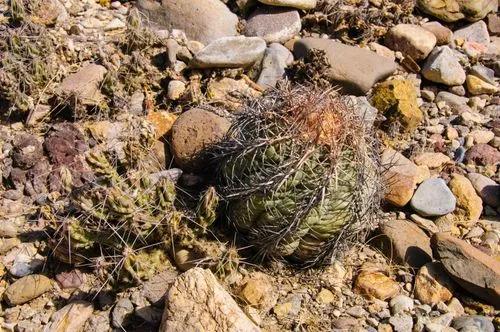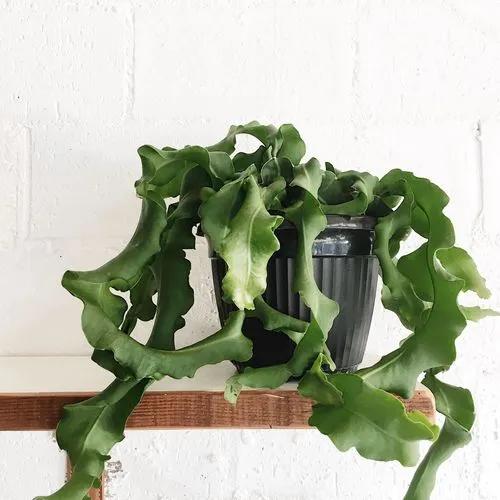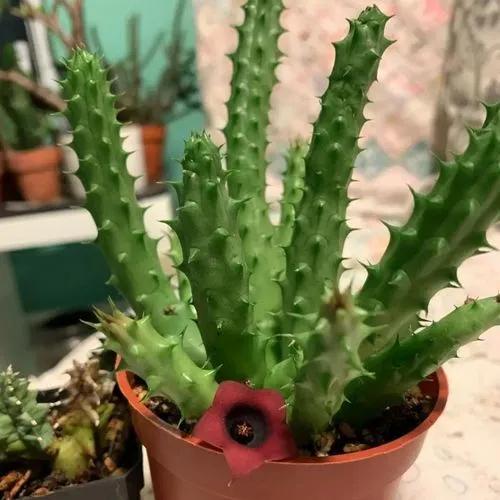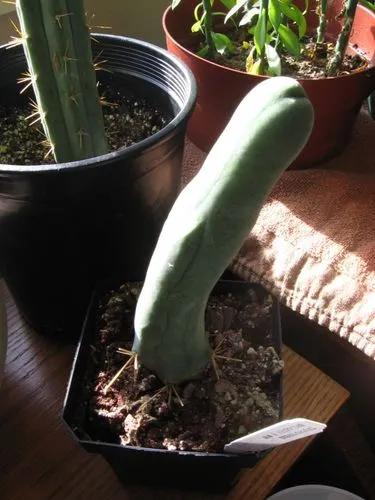Mammillaria parkinsonii, also known as owl-eye pincushion or owl-eye cactus, is a species of flowering plant in the family Cactaceae. It is endemic to Queretaro, Mexico. Mammillaria parkinsonii is listed as Endangered due to a limited distribution (extent of occurrence ca 2,500 km2), severe fragmentation, a continuing decline due to illegal collection, and degradation of its habitat across its range. Clarification of the taxonomic status of this species is a research priority. In height, the stem is up to fifteen centimeters, in diameter eight. The tubercles (papillae) are pyramidal, hard, with a milky juice, which are up to one centimeter long. Areoles are round, at first strongly pubescent, eventually glabrous. Axilli ((from Lat. axilla — "armpit") - the sinus between the papillae (mamillae) or tubercles) with white hair and wavy bristles. Radial spines, in the number of twenty to thirty-five, snow-white, bristle-shaped, from three to seven millimeters in length. The central spines are two in number, but there are up to five pieces, the upper one is up to eight millimeters in length, the lower one is up to two centimeters. The flowers are creamy, funnel-shaped.
Owl-eye Cactus Care
Mammillaria Parkinsoni
Other names: Owl-eye Pincushion



How to Care for the Plant

Water

During the growing season, starting in April or May and throughout the summer, it needs watering when the soil feels dry when you put your finger into the top inch. Water slowly until water runs out of the drainage hole, and empty the saucer so no water remains. Only water again when the soil has dried out again. On hot summer days, this can happen fast so check the soil regularly.

Pruning

doesnt need pruning

Fertilizer

As you start watering the plant more regularly in the spring when the growing season starts, fertilize once a month, either with a special liquid succulent plant food, or a complete granular fertilizer, using half the amount specified on the product label.

Sunlight

Huernias prefer bright light or partial shade.

Soil

The soil is often calcrete or loamy Consequently, owl eyes succulents require a potting mix with excellent drainage to help mimic their natural environment. A mixture of 50 percent pumice or perlite, 25 percent peat or organic mulch, and 25% sand is perfect for Huernia zebrina and will help to prevent root rot.

Temperature

Owl eyes succulents need warm temperatures. They do best between 50 to 80 degrees Fahrenheit (10 to 27 degrees Celsius) and should be protected from cold or freezing temperatures.

Additional

This plant is not toxic to people or pets. This species is native to Queretaro, Mexico. They are cacti with a bluish-green body, simple and globose that form large colonies and reach 20 cm in height. They have pyramidal tubercles with white woollyness and bristles in the axils of the upper part of the plant.

Popularity

5 people already have this plant 7 people have added this plant to their wishlists
Discover more plants with the list below
Popular articles






